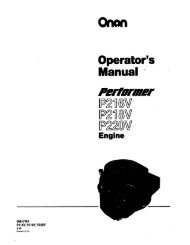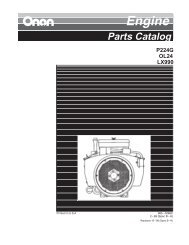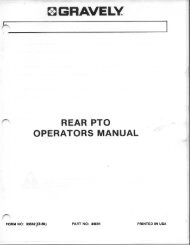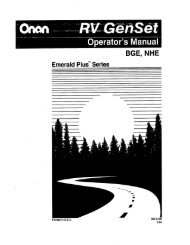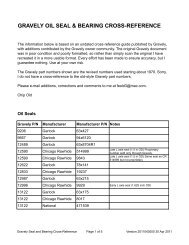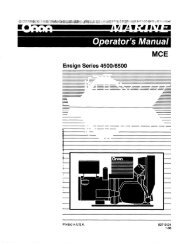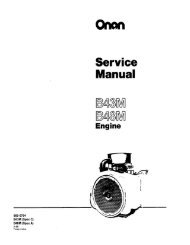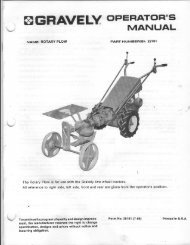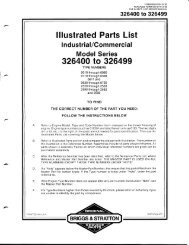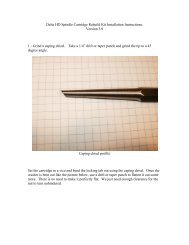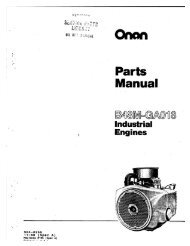272144 Vanguard Twin Cylinder OHV BRIGGS & STRATTON.pdf
272144 Vanguard Twin Cylinder OHV BRIGGS & STRATTON.pdf
272144 Vanguard Twin Cylinder OHV BRIGGS & STRATTON.pdf
You also want an ePaper? Increase the reach of your titles
YUMPU automatically turns print PDFs into web optimized ePapers that Google loves.
GASEOUS FUEL CARBURETOR<br />
ADJUSTMENT<br />
<br />
Some Briggs & Stratton V-<strong>Twin</strong> engines were<br />
available factory-built to operate on liquefied<br />
petroleum gas (LPG) or natural gas (NG). To<br />
maintain the California Air Resource Board (CARB)<br />
emissions certification on these engines, the<br />
Original Equipment Manufacturer (OEM) must use<br />
specific equipment and procedures to complete the<br />
installation. The following describes the OEM<br />
requirements. Always have a certified LPG/NG<br />
technician perform repairs on gaseous fuel systems.<br />
Fig. 58<br />
<br />
<br />
NOTE: The main adjustment is the large brass<br />
adjustment screw (1) just to the left of the<br />
solenoid (2) and capped port (3), Fig. 58.<br />
The idle adjustment is located below and to<br />
the left of the main adjustment. An accurate<br />
CO meter is required to adjust the gaseous<br />
fuel mixture.<br />
1. Start the engine. Set the main mixture adjustment<br />
at high speed under load to achieve 1/2 –<br />
1% CO in the exhaust.<br />
2. Allow the engine to warm up at top speed for 2<br />
minutes.<br />
3. Slow the engine to between 1100 – 1750 no-load<br />
RPM. Adjust the idle mixture to achieve 1/2 – 1%<br />
CO in the exhaust.<br />
4. Return the engine to high speed full-load. If<br />
required, readjust the setting to 1/2 – 1% CO.<br />
5. Stop the engine. Install the anti-tampering<br />
plugs.<br />
LPG-Only Operation<br />
NOTE: If the application is designed so that the<br />
engine normally operates on NG, but<br />
defaults to LPG if the NG supply is<br />
interrupted, no adjustments for LPG<br />
operation are required. The following steps<br />
describe the setting procedure when the<br />
engine is ONLY powered by LPG.<br />
1. Follow steps 1 through 4 above. The same<br />
components (regulators, lock-off, fuel lines, etc.)<br />
used with the NG installation are used for the<br />
LPG installation.<br />
2. Connect the fuel transfer solenoid to a 12 volt<br />
DC power supply. As an alternative the main<br />
adjustment screw may be turned in until<br />
completely seated eliminating the need for<br />
applying power to the solenoid.<br />
3. Start the engine and run it at top speed for 2<br />
minutes to warm up. The engine uses a fixed<br />
main jet for LPG operation, no adjustment is<br />
necessary.<br />
4. Slow the engine to 1100 – 1750 RPM no-load.<br />
Adjust the idle mixture to achieve a reading of up<br />
to 3% CO.<br />
5. Stop the engine. Install the anti-tampering<br />
plugs.<br />
63




